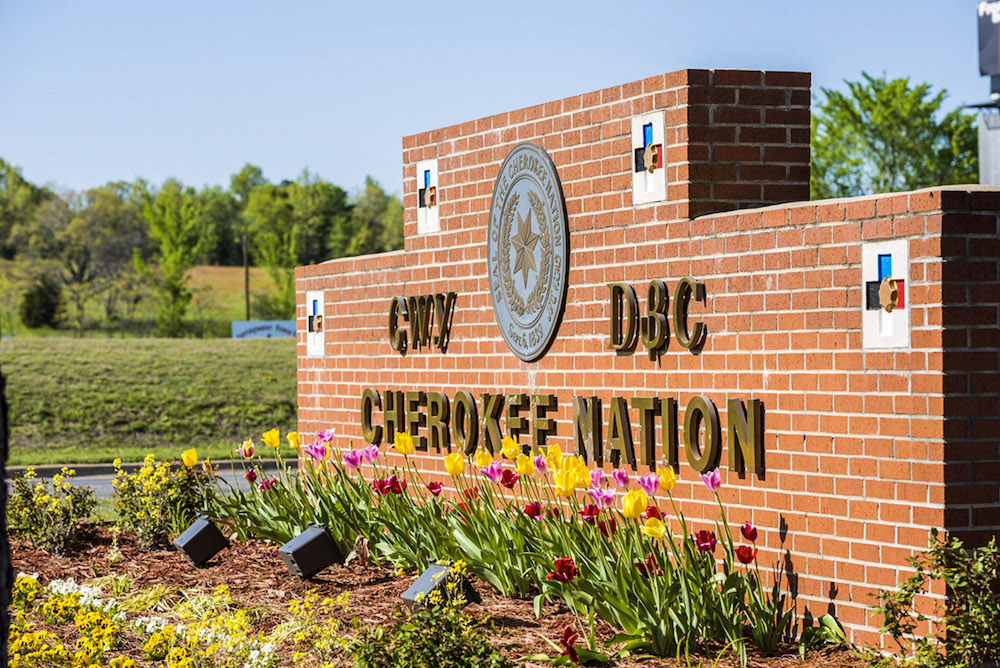
- Details
- By Chuck Hoskin Jr
Guest Opinion. Cherokee Nation’s government has the essential task of serving more than 460,000 citizens across the world. Whether it’s providing life-saving health care, training Cherokees for good jobs, giving access to safe, affordable housing, providing cultural and language programs, and more, everything we accomplish depends on hard-working tribal employees.
We need their skills, and they deserve our support. That’s why I am proud to announce a major investment of $10.6 million to increase salaries for over 80% of our government and health care employees.
Our journey toward improving compensation began with a commitment to steadily raise the minimum wage to $15 an hour by 2025. All workers deserve at least a living wage, but we need to offer competitive salaries across the board. That's why Deputy Chief Bryan Warner and I called on Cherokee Nation’s Human Resources Department to conduct a comprehensive market study across all job descriptions.
Under my executive order, most of our government workforce is already at $15 per hour under a special program for those below that rate. Over 90% of our government workforce signed up for a program that offers financial literacy and other skills classes in exchange for a wage subsidy, an additional multi-million-dollar investment in our workforce.
This new market analysis ensures that our employees are paid not only in line with their skills and experience, but with the competitive market rates in northeast Oklahoma. The study examined what municipalities and companies in our region paid for similar positions. It also considered several long-term factors: the regional economic landscape, cost of living adjustments, employee retention goals, and the lasting impacts from the COVID-19 crisis.
The results
 Make A Donation Here
Make A Donation Here

Without a doubt, Cherokee Nation remains a top employer of choice in northeast Oklahoma. Attracting and retaining top talent is crucial for our tribe’s progress, and fair compensation will always be key to this goal.
The pay boost is only the latest improvement in employee support we have implemented over the past few years. Other successful endeavors include mental wellness leave, paid family leave for childbirth, adoption or foster placement family leave, hazard pay during the pandemic, and new flexible spending accounts that are seeded with $2,000 per child to all eligible employees. These initiatives reflect a holistic approach to employee well-being. We want to make sure our team can support their families financially and be there for them in times of need.
The investment in employees reflects our Cherokee value of lifting up one another. As a sovereign nation and a responsible employer, we will always value our workforce and lead the way in supporting them as individuals, team members and family.
Powered by our employees, Cherokee Nation is a government of progress, unity and prosperity, building a brighter future for Cherokees everywhere.
Chuck Hoskin, Jr. is the principal chief of the Cherokee Nation.
More Stories Like This
The Absence of October's Job Report Shows Why Native American Communities Need Better DataTribal IDs Are Federally Recognized. ICE Agents Are Ignoring Them.
Thanksgiving: Part of "Broken Circle Holiday"
Thanksgiving is a Tradition. It's Also a Lie
Decisions About Us, Without Us: Education Dismantling Ignores Tribal Nations
Help us defend tribal sovereignty.
At Native News Online, our mission is rooted in telling the stories that strengthen sovereignty and uplift Indigenous voices — not just at year’s end, but every single day.
Because of your generosity last year, we were able to keep our reporters on the ground in tribal communities, at national gatherings and in the halls of Congress — covering the issues that matter most to Indian Country: sovereignty, culture, education, health and economic opportunity.
That support sustained us through a tough year in 2025. Now, as we look to the year ahead, we need your help right now to ensure warrior journalism remains strong — reporting that defends tribal sovereignty, amplifies Native truth, and holds power accountable.
 The stakes couldn't be higher. Your support keeps Native voices heard, Native stories told and Native sovereignty defended.
The stakes couldn't be higher. Your support keeps Native voices heard, Native stories told and Native sovereignty defended.
Stand with Warrior Journalism today.
Levi Rickert (Potawatomi), Editor & Publisher
